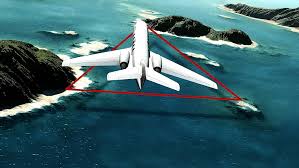Fresh Water Generator: A Vital Component of Maritime Operations

In the vast world of maritime operations, access to fresh water is not just a convenience—it’s a critical necessity. Whether for drinking, cooking, hygiene, or machinery use, freshwater is essential for both crew welfare and ship operations. However, when a ship is on long voyages across saline oceans, carrying vast quantities of potable water is neither practical nor economical. This is where the Fresh Water Generator (FWG) becomes indispensable. These machines play a key role in converting seawater into usable fresh water onboard ships, ensuring a continuous supply without the need for large water storage.
Table of Contents
ToggleWhat is a Fresh Water Generator?
A Fresh Water Generator is a piece of marine equipment used on board ships to convert seawater into fresh water. This process, called desalination, removes salt and other impurities from seawater to make it suitable for human consumption and engine room purposes.
There are different types of fresh water generators, but the most common ones used on ships include:
-
Vacuum Distillation Type (Low-Pressure Evaporator)
-
Reverse Osmosis (RO) System
Each type has its own operational mechanism, but both serve the primary purpose of producing clean, safe, and fresh water from seawater.
Working Principle of a Fresh Water Generator
The working principle depends on the type of FWG being used.
1. Vacuum Distillation Type (Evaporator)
This is the most widely used FWG on ships. It operates on the principle of reducing the boiling point of water by creating a vacuum. Here’s how it works:
-
Seawater Intake: Seawater is pumped into the evaporator chamber.
-
Heating: A heat source, usually jacket water from the ship’s engine (already hot), is used to heat the seawater.
-
Evaporation: Due to the vacuum created inside the evaporator, the boiling point of seawater reduces, and it starts evaporating at temperatures as low as 60°C.
-
Condensation: The vapor is then passed over a condenser (cooled by incoming seawater), where it condenses into fresh water.
-
Collection: The fresh water is collected in a storage tank, while the concentrated brine is discharged back into the sea.
2. Reverse Osmosis (RO) Type
Reverse osmosis is a filtration-based system that uses a semi-permeable membrane to separate fresh water from seawater.
-
Pre-treatment: Seawater is filtered to remove large particles and microorganisms.
-
High-Pressure Pumping: The filtered water is pumped at high pressure through an RO membrane.
-
Separation: The membrane allows only water molecules to pass through, blocking salts and other impurities.
-
Collection and Disposal: The purified fresh water is collected, while the saline concentrate (brine) is discharged.
Components of a Fresh Water Generator
Typical components found in a vacuum distillation FWG include:
-
Evaporator Chamber
-
Condenser Unit
-
Ejector or Vacuum Pump
-
Salinometer (to measure salt content in output water)
-
Fresh Water Pump
-
Heat Exchanger (using engine jacket water)
-
Brine Pump
In RO systems, additional filters, high-pressure pumps, and membranes are key components.
Importance of Fresh Water Generator on Ships
-
Continuous Supply: Ships may remain at sea for weeks or months. FWGs ensure a steady and reliable source of fresh water without relying on shore supplies.
-
Space Saving: Carrying large volumes of water takes up valuable cargo or fuel space. By generating fresh water on-demand, ships can save space and reduce overall weight.
-
Cost Efficiency: Producing water onboard is more economical than purchasing and storing freshwater from ports.
-
Environmental Compliance: Modern FWGs are designed to reduce waste and minimize brine discharge, aligning with MARPOL regulations.
-
Crew Health and Safety: Clean, fresh water is crucial for maintaining hygiene and health standards on board.
Maintenance and Challenges
Like all shipboard machinery, FWGs require regular maintenance to operate efficiently.
Common Maintenance Tasks:
-
Descaling and cleaning of heat exchangers
-
Monitoring and cleaning RO membranes
-
Inspection of pumps and vacuum systems
-
Salinometer calibration
-
Checking for leaks and corrosion
Common Challenges:
-
Scaling and fouling of heat transfer surfaces due to mineral deposits.
-
Membrane damage in RO systems from poor-quality feed water or chemical imbalance.
-
Vacuum failure in distillation units due to leaks or ejector problems.
-
Energy consumption can be high, especially in RO systems.
Advancements in FWG Technology
Modern marine engineering has brought innovations to FWG design. New systems are more energy-efficient, compact, and environmentally friendly. Some of these advancements include:
-
Hybrid Systems: Combining RO and distillation methods.
-
Energy Recovery Devices: In RO systems to reduce power consumption.
-
Smart Monitoring: Integration with ship’s automation systems for real-time performance tracking.
Conclusion
A Fresh Water Generator is more than just a convenience on board a vessel—it’s a cornerstone of maritime sustainability and self-sufficiency. By converting the seemingly unusable seawater into life-supporting fresh water, these generators make it possible for ships to undertake long voyages safely and efficiently. As environmental regulations tighten and the demand for cleaner, greener ships rises, FWG technology will continue to evolve, playing a critical role in the future of maritime operations.
Whether it’s supporting the daily needs of the crew, maintaining engine performance, or ensuring compliance with global standards, the fresh water generator is an unsung hero of the seas.






Leave a Comment